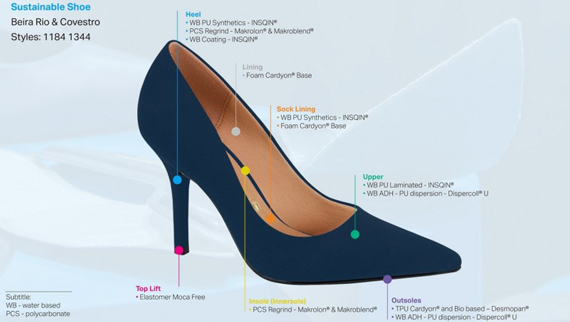More news

| Use of CO2 and biomass as raw materials Plastic waste as a valuable resource Low-solvent coatings and adhesives
Together with leading Brazilian footwear manufacturer Calçados Beira Rio, Covestro is developing concept shoes that combine a pioneering design with innovative, more sustainable material solutions. An elegant women’s shoe and a comfortable casual shoe are used as examples to illustrate the variety of possibilities – from upper to lining, from sole to heel. The result is a more sustainable overall solution with superior performance and plenty of design possibilities. Both shoes feature Covestro products derived from alternative raw materials, such as CO₂, biomass and plastic waste. These are a valuable resource as they provide carbon that can be put to use beneficially in a circular economy, instead of being released into the atmosphere as waste gas. Covestro is pioneering the use of such raw materials to reduce its dependence on fossil materials and increase the sustainability of the value chain. Walking with CO₂ technologyOne example is the upper and inner lining of the two shoes. The base is a soft foam that ensures a good fit and comfortable footfall. Here, a precursor product was used that contains up to 20% carbon dioxide and is marketed by Covestro under the name cardyon®. The CO₂ replaces some of the fossil raw materials previously used but does not compromise the favourable properties of conventionally produced foam. Two different types of thermoplastic polyurethane (TPU) are found in the outer soles of both women’s shoes. One of them is also based on cardyon®; while in the other, 60% of the carbon content is derived from biomass. As a result, both products have a lower CO₂ footprint than fossil-based TPU and help close the carbon cycle. Covestro is also focusing on the recovery of plastic waste as part of its strategic programme to support the circular economy, and is working with partners to develop new value-adding cycles to achieve this. For example, used polycarbonate products are shredded, cleaned, possibly mixed with new plastic and reused as recycled Makrolon®. In women’s shoes, this lends lasting strength to the insole and heel. |



